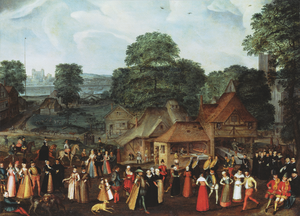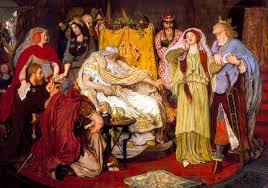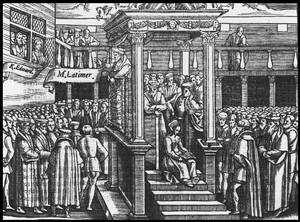Christianity, the most important religion in Europe, is divided in two major factions – Catholics and Protestants – of diametrically opposing beliefs. In the early 16th century, religion was an important factor which held society together, but later became a vehicle for extending and consolidating political power.
Politics in the Elizabethan Era
The religious situation in England was confused; differences in religion were likely to cause to civil unrest at the very least. When Elizabeth I ascended to the throne in 1558, Catholics and Protestants wrangled for political power in England.
Elizabeth’s first act as the Queen was restoring Protestantism as the official religion. She did, however, firmly believe that people should be allowed to practice the Catholic religion without fear so long they kept their religion private and were prepared to attend their parish churches. Thus, many English Catholics worshipped with their Protestant neighbours, until it was formally forbidden by Pope Pius V’s 1570 bull, Regnans in Excelsis.

Because she was the daughter of Henry VIII and his second wife, Anne Boleyn, the Pope declared that her parents’ marriage was not legal and that Elizabeth was not a rightful queen and should be deposed, and formally excommunicated her.
To minimize bloodshed over religion in her dominions, the religious settlement between the factions of Rome and Geneva was brought about. Parliament was summoned in 1559 to consider a Reformation Bill and to recreate an independent Church of England. I
Catholicism in the Elizabethan Era
In 1536, the Church in England had split from Rome over the issue of the divorce of King Henry VIII from Catherine of Aragon, leading to the formation of a separate religious authority known as Church of England and a reformed form of Catholicism, known as Anglicanism.

The religious settlement of Elizabeth I, proposed an improved version of Anglicanism, in two Acts of the Parliament of England. The Act of Supremacy of 1559 re-established the Church of England’s independence from Rome, and conferred the title ‘Supreme Governor of the Church of England’ on Elizabeth; while the Act of Uniformity of 1559 included the establishment of the Book of Common Prayer.
Elizabethan Religion Facts
In addition, the Forty-Two Articles of Anglican doctrine, written by Thomas Cranmer in 1552, was adapted by convocation of clergy under Elizabeth I to form the Thirty-Nine Articles in 1563.
Though, it was accepted by majority of masses, the Church of England made many enemies on the way. Anglicanism was imposed by law, and secured Parliamentary approvals, only by a narrow margin though all the Catholic bishops who continued to recognize papal supremacy, and who were not imprisoned, voted against it. At the same time, Puritans, a militant group of Protestants, opposed it.

The Puritans sought to cleanse the church of its papal influences and restore the proper authority of the Bible. They refused to accept the rituals and formulas of the Book of Common Prayer; its imposition of its legal force provoked Puritans into a definite opposition force. Both groups were punished and disenfranchised, or exiled, in various ways, but the cracks in the facade of religious unity in England appeared.
More Info On- Elizabethan Era Beliefs and Superstitions, Religion Settlement